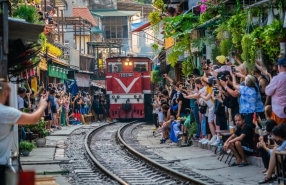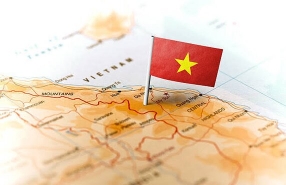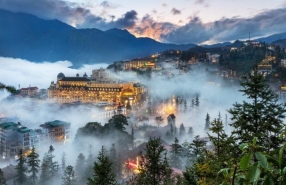Vietnam Travel Map: Useful Information Vietnam Map For Your Journey

Vietnam boasts a rich history, vibrant culture, and stunning natural beauty. From ancient temples and colonial buildings to modern cities, ethnic villages, and scenic landscapes, there's something for everyone. To plan your visit and make the most of your time, using a detailed Vietnam map is invaluable. This Vietnam travel map will highlight the touristic and geographic features of this country. In this article, you'll find a complete guide to Vietnam to help you plan your trip and enjoy every moment of your adventure.
Map of Vietnam tourist spots
I. Vietnam geography map

Nestled near the centre of Southeast Asia, Vietnam is the easternmost country on the Indochinese peninsula, covering an area of approximately 331,212 square kilometres. Shaped like a long, graceful S, it stretches about 1,650 kilometres from north to south, with its narrowest point at Dong Hoi in Quang Binh province, measuring just 50 kilometres wide. According to the Vietnam geography map, the country's terrain is remarkably diverse, with mountains and hills dominating roughly two-thirds of the mainland, while the Red river delta in the north and the Mekong river delta in the south offer fertile plains and a network of waterways and rice paddies.
In Vietnam map, we can see Vietnam’s total length is 1650 kilometres with a long coastline of 3260 kilometres from Mong Cai in the north to Ha Tien in the south, along with its maritime area spanning about 1.000.000 square kilometres in the East Sea, with more than 4000 islands, both large and small, underline its significant maritime rights and sovereignty.The tropical monsoon climate enhances this varied landscape, featuring hot and humid summers, mild winters, and clear distinctions between wet and dry seasons. Temperature variations between the north and south add to the regional diversity.
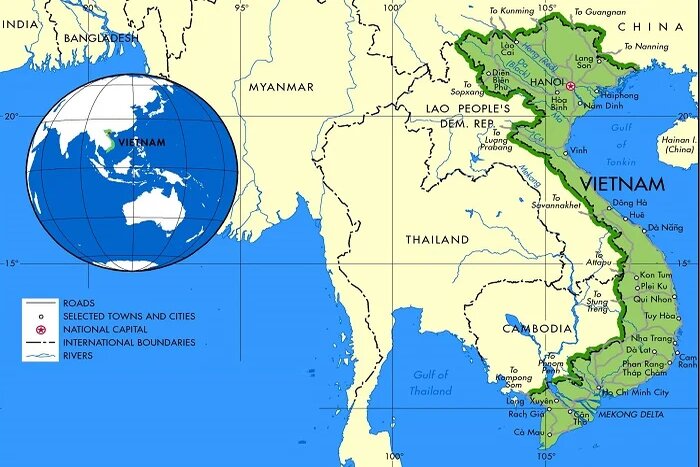
Vietnam’s natural landscape is both unified and complete, incorporating land, sea, and sky. It is divided into several distinct regions, including the mountainous areas, the Red river delta, the Truong Son Range, the Central highlands, and the Central coastal plain. High mountains occupy merely 1% of the territory, while plains and low-altitude hills account for up to 85% of the land. Despite its mountainous terrain, agricultural land constitutes less than 20% of the total area.
This diverse tapestry of landscapes seen on the map of Vietnam ranges from majestic mountains like Fansipan to lush valleys and pristine beaches, along with a rich biodiversity that includes rainforests, mangroves, and coral reefs, significantly enriches Vietnam's cultural heritage and tourism appeal. The elongated and narrow shape of the mainland, coupled with its winding, S-shaped coastline, contributes to the dynamic and vibrant nature of the country's regions.
II. Vietnam travel map
Vietnam stands as an alluring destination for tourists, offering an array of attractions that range from vibrant urban centers to tranquil natural settings on Vietnam map. Embark on an unforgettable journey through Vietnam's rich landscapes, historic sites, and lively culture, guided by a Vietnam travel map that opens doors to diverse experiences.

Starting in the northern region, the energetic capital of Hanoi captivates with its colonial architecture, bustling markets, and renowned sites such as the Temple of Literature and Ho Chi Minh Mausoleum. A short journey away lies Ha Long Bay, a UNESCO World Heritage Site famous for its spectacular limestone karsts emerging from the emerald waters, ideal for boat tours and kayaking. For those seeking the allure of the highlands, Sapa offers stunning terraced rice fields, traditional hill tribe villages, and treks to Fansipan, the tallest peak in Indochina.
On the Vietnam tourist map, Central Vietnam enchants visitors with its historical depth and scenic beauty Hue, once the imperial capital, is home to the majestic Forbidden City and ancient royal tombs, whispering stories of past dynasties. Nearby Da Nang mixes contemporary vibrancy with natural wonders, including pristine beaches and the scenic Marble Mountains, while Ba Na Hills boasts breathtaking vistas. Hoi An, preserved as a UNESCO World Heritage Site, delights with its old-world charm, colourful vibrant lantern-filled streets, and bespoke tailoring shops…always captivating tourists all over the world.
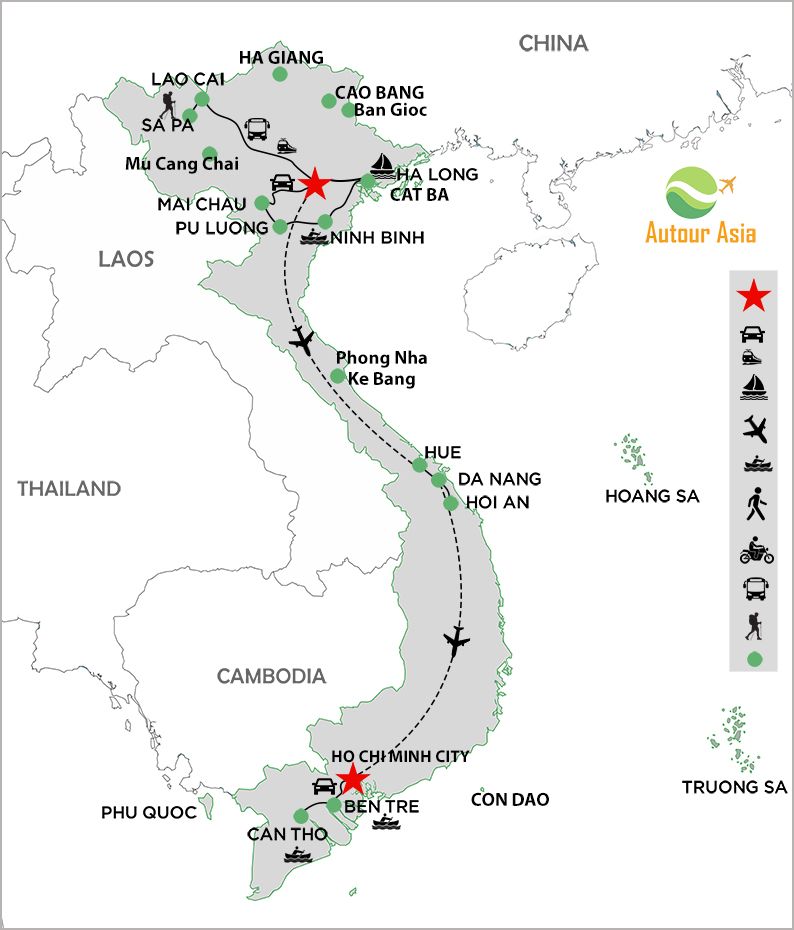
Travelling south Vietnam, the dynamic Ho Chi Minh City offers a stark contrast with its bustling streets, historical landmarks like the War Remnants Museum, and colonial structures. The Mekong Delta, with its expansive network of rivers and rice paddies, provides a unique insight into the rural Vietnamese lifestyle through boat tours and vibrant floating markets. For beach lovers, Phu Quoc beach or Con Dao island is the most ideal destination, providing a perfect escape with its immaculate shores, excellent diving spots, and luxurious mud baths.
This overview highlights the captivating destinations waiting to be discovered on a Vietnam tourist map. From the historical and cultural richness of the north to the stunning beaches and natural beauty of the south, each region promises an unforgettable experience. Start planning your trip and prepare to be enchanted by the magic of Vietnam.
III. Vietnam map in 3 regions

1. Northern Vietnam map
The North on map Vietnam encompasses a diverse range of landscapes and cultures, stretching from the capital Hanoi to the mountainous border with China, with a total of 25 provinces and cities, offers a fascinating blend of history, culture, and breathtaking natural beauty, making it a captivating destination for all travellers.
a. Northeast Vietnam
Northeast Vietnam includes 8 provinces: Tuyen Quang, Thai Nguyen, Phu Tho, Ha Giang, Cao Bang, Lang Son, Ban Kan, Bac Giang. Perhaps the outstanding feature of the mountainous terrain of the Northeast is the low-altitude hills and mountains (less than 1000 m) that account for most of the region. On the geographical map of Vietnam, the terrain of this area has the common characteristic of gradually tilting from Northwest to Southeast. The northeastern hills and mountains lie east of the Red river valley. Tourists often choose a circular route that is also the main direction of the mountainous terrain to explore as much as possible of the Northeast loop route. This place always attracts tourists with tourist attractions that cannot be missed when coming to Vietnam such as Ha Giang and Cao Bang with many special historical and cultural attractions. This land is also a diverse cultural mix between the Tay, Nung, Lo Lo,...

b. Northwest Vietnam
On map of Vietnam, the Northwest of Vietnam, comprising 6 provinces: Son La, Yen Bai, Dien Bien, Lai Chau, Hoa Binh, and Lao Cai, known as the region with the most rugged topography but also the most worth conquering in Vietnam. The terrain in the Northwest is high and deeply divided, with many massifs and high mountain ranges running in the northwest-southeast direction. Renowned for its features of a mountainous landscape, consistently cool climate, diverse natural beauty and the vibrant cultures of more than 20 ethnic minorities like the Thais, H'Mong, Muong, and Dzao,...the area draws numerous tourists as an ideal destination for hiking, trekking… Unlike conventional luxury tourism, the northwest is celebrated for its ecotourism, offering visitors a retreat into nature away from urban life, where they can experience the hospitality of ethnic communities and their unique, colourful attire.

c. Red River Delta
The Red River Delta is a vast region surrounding the Red River basin in Northern Vietnam. It is one of the most developed areas in the country, not only in tourism but also in various other sectors. We can use the Vietnam map to find that this is the largest area in the country (more than 331,000 square kilometres) with flat terrain and a dense river system, which has created favourable conditions for the development of the region's transportation system and infrastructure. Looking on Vietnam travel map, this area has 11 provinces and cities that always attract a large number of tourists to stop when coming to Vietnam because this place gathers many places that cannot be missed such as the capital Hanoi, HaLong bay - a world heritage site or “its sister” Tam Coc - Ninh Binh,... and many other attractions are always waiting for your trip. This region is primarily inhabited by the Kinh people, the largest ethnic group in Vietnam, along with some Thai and Muong communities in neighbouring areas.

>>> Itinerary in northern Vietnam
>>> Northern Vietnam package tour
>>> All our North Vietnam Tours
2. Central Vietnam map
a. North Central Vietnam
If you look at the Vietnam geography map, you can see the north central Vietnam, stretching from Thanh Hoa to Thua Thien Hue, is distinguished by the eastern slopes of the Truong Son Range. This majestic mountain range and its lush forests create a breathtaking landscape, renowned for its stunning caves, particularly in Quang Binh, which is famously known as the "Kingdom of Caves." The region is also traversed by significant rivers, including the Ma river, Cariver, and Huong Rivers. These rivers form fertile deltas that are perfect for agriculture and offer picturesque settings for river cruises. Additionally, the North Central region boasts long stretches of pristine white sand beaches with clear blue waters, consistently attracting tourists to its shores.
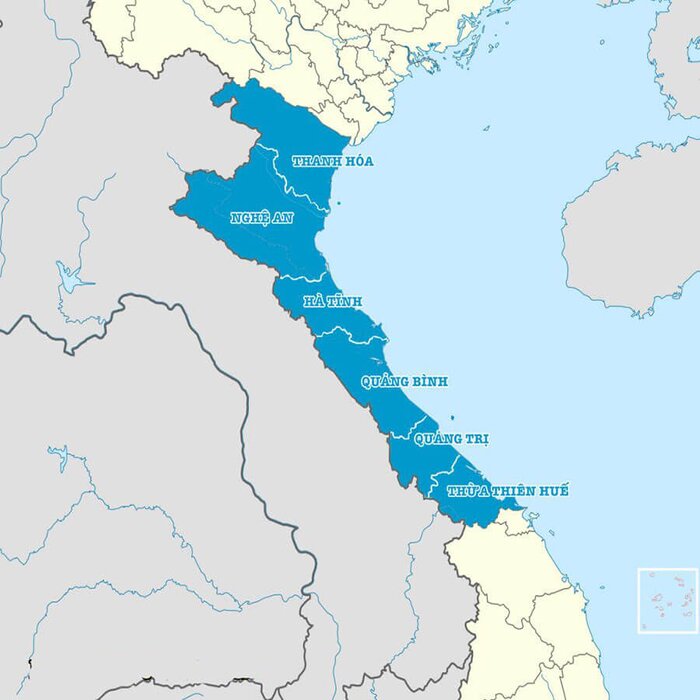
b. The Central Highlands
The Vietnam Central Highlands (Tây Nguyên in Vietnamese) has a total area of about 54,476 square kilometres, located on the geographical map of Vietnam to the west and southwest of Central Vietnam (west of the Truong Son range). The Central Highlands borders Laos and Cambodia to the West, the South Central economic region to the East and the Southeast region to the South. The terrain of this region is extremely diverse and complex, mainly plateaus and high mountains with altitudes from 250 m to 2500 m, characterised by basalt red soil. This is considered the cradle of production and development of Vietnamese tea, pepper or coffee for export to foreign countries. It is also home to a number of Vietnamese ethnic minority communities such as Ba Na, Ede, Gia Rai…
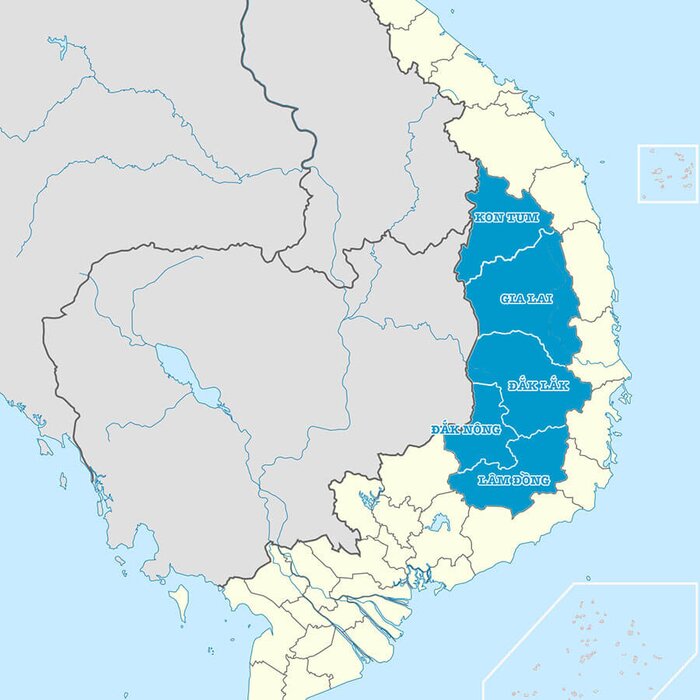
c. South Central coast
Vietnam travel map reveals that the South central coast of Vietnam, spanning from Da Nang to Binh Thuan, is a region distinguished by its diverse and captivating geography. This part is located on the geographical map of Vietnam and belongs to the coastal zone. In fact, the terrain of the Central Coast includes coastal plains and low mountains with an estimated width of about 50 km. Certainly narrower than the north Central and Central Highlands, this area combines the rugged beauty of the eastern slopes of the Truong Son range with fertile coastal plains and pristine beaches, creating a dynamic and picturesque landscape. Iconic beaches include My Khe Beach in Da Nang, An Bang Beach in Hoi An, and the stunning bays, all ideal for sunbathing, swimming, and water sports.
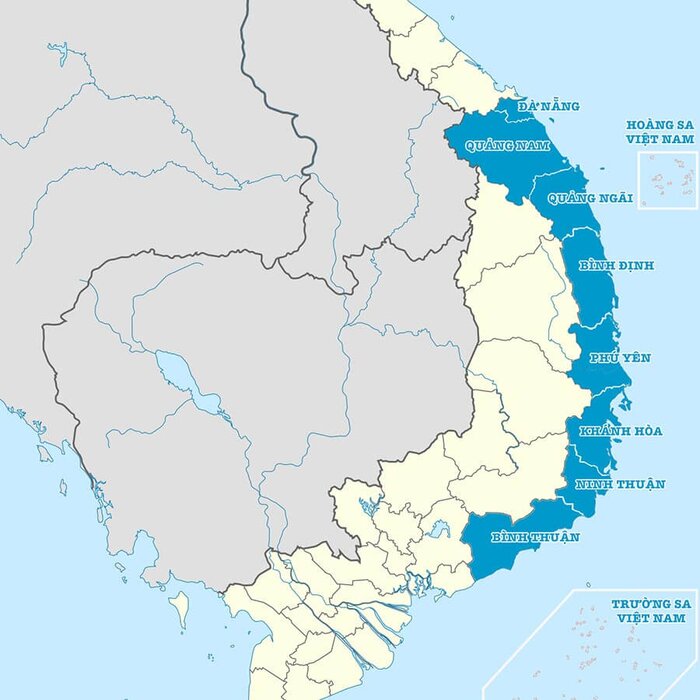
3. Southern Vietnam map
South Vietnam forms a crucial part of the country of Vietnam. This region occupies the southern portion of Vietnam and is strategically bordered by the Gulf of Thailand to the west, the East Sea to the east and southeast, and Cambodia to the north and northwest. This geographic positioning endows South Vietnam with a variety of landscapes, encompassing bustling cities, lush deltas, and scenic coastlines.
Southern Vietnam can be broadly divided into two distinct regions, according to the Vietnam map and each offering unique experiences. The southeastern region sits on a wide plain, transitioning from the mountainous majesty of the South Central Highlands to the fertile lands of the Mekong Delta. This area comprises 5 provinces and cities, including Ho Chi Minh City, a pulsating centre of commerce, culture, and history.
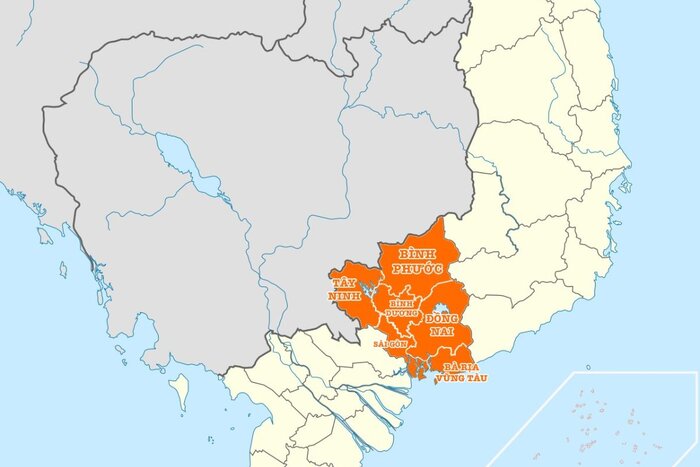
In contrast, the southwestern region (Mekong delta region) encompasses a vast delta formed by the mighty Mekong River. Here, 12 provinces and cities sprawl across a landscape characterised by its low elevation (averaging around 2 metres) and consisting primarily of newly formed alluvial deposits. While generally flat, pockets of low mountains can be found in the western reaches bordering Cambodia, particularly in An Giang and Kien Giang provinces. The Mekong River and its tributary, the Dong Nai River, are the lifeblood of this region, nourishing the fertile plains and providing a vital transportation network.

IV. Vietnam airport map & Vietnam combination tours
Vietnam's extensive airport network spans the entire country from North to South, featuring numerous prestigious airlines such as Vietnam Airlines, Vietjet Air, Jetstar Pacific,... that offer a wide range of destinations and flight schedules. This robust infrastructure not only enhances domestic tourism but also facilitates travel within Southeast Asia and globally, ensuring that travelers can always enjoy unforgettable journeys.

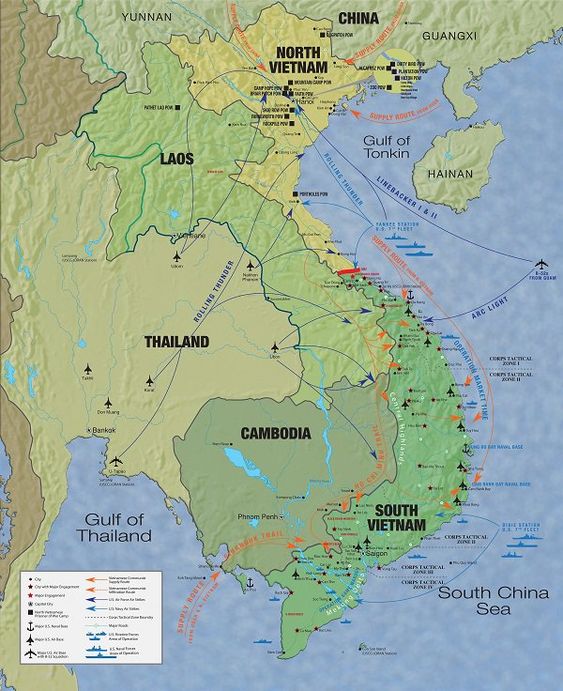
>>> Vietnam and Thailand Itinerary 10 Days
>>> Vietnam Cambodia Thailand itinerary
V. FAQs about Vietnam map
1. How can the Vietnam map help in planning my trip?
> Answer: A detailed Vietnam travel map helps in understanding the geography, planning routes, and identifying key attractions in each region. It is essential for organising an efficient travel itinerary and ensuring you don't miss any important sights.
2. Are Vietnam maps available in multiple languages?
> Answer: Yes, maps of Vietnam are often available in several languages, including English, French, German, and Japanese, catering to international tourists.
3. Can I get a digital version of the Vietnam map?
> Answer: Digital versions of Vietnam maps are widely available and can be accessed through various travel apps (the most famous is Google map), websites, and downloadable PDFs, offering convenience for tech-savvy travellers.
Unfold a Vietnam map and discover a captivating tapestry of landscapes, cultures, and experiences. This diverse country promises an unforgettable journey, so pack your bags and embark on your Vietnam adventure! To ensure your journey is tailored to your preferences, we are pleased to offer our assistance in creating a customised itinerary. Please do not hesitate to Autour Asia - best Vietnam travel agency for a complimentary consultation.
>>> 15 day Vietnam itinerary
>>> Vietnam Tour 17 days
>>> Vietnam travel tour packages
>>> Vietnam itinerary 3 weeks
The best time to visit Vietnam is generally from October to April. The weather is cooler and drier, particularly in the northern regions, making it more comfortable for sightseeing. However, the ideal travel time varies by region. The south Vietnam is pleasant year-round, while the north experiences cooler temperatures in winter.
When packing for Vietnam, consider bringing lightweight, breathable clothing for the warm climate. If you're traveling to the north, pack a light jacket for cooler evenings, especially in the winter months. Comfortable shoes are essential for exploring, and you should bring a hat, sunscreen, and insect repellent. Also, don’t forget your camera to capture Vietnam’s beautiful landscapes!
Yes, Vietnam is known for being an affordable travel destination. Accommodations, food, transportation, and activities are relatively inexpensive compared to other Southeast Asian countries. Vietnam street food is particularly cheap and delicious, and there are options for budget, mid-range, and luxury travelers alike.
>>> You can see more : Vietnam trip cost
Related travel guide
Other similar articles
CUSTOMIZABLE BY LOCAL EXPERTS
Personalized trip at the original price!
REFUND GUARANTEE
We believe in our work and promise to give you money back.
GOOD PRICE / QUALITY
95% satisfied more than expected!
24/7 LOCAL SUPPORT
We are always available online to provide assistance at any time.
Most read articles
Autour Asia is highly recommended on
Embracing the mission of "Satisfied more than expected" and providing authentic experiences, we have received numerous recommendations on reputable travel forums:














